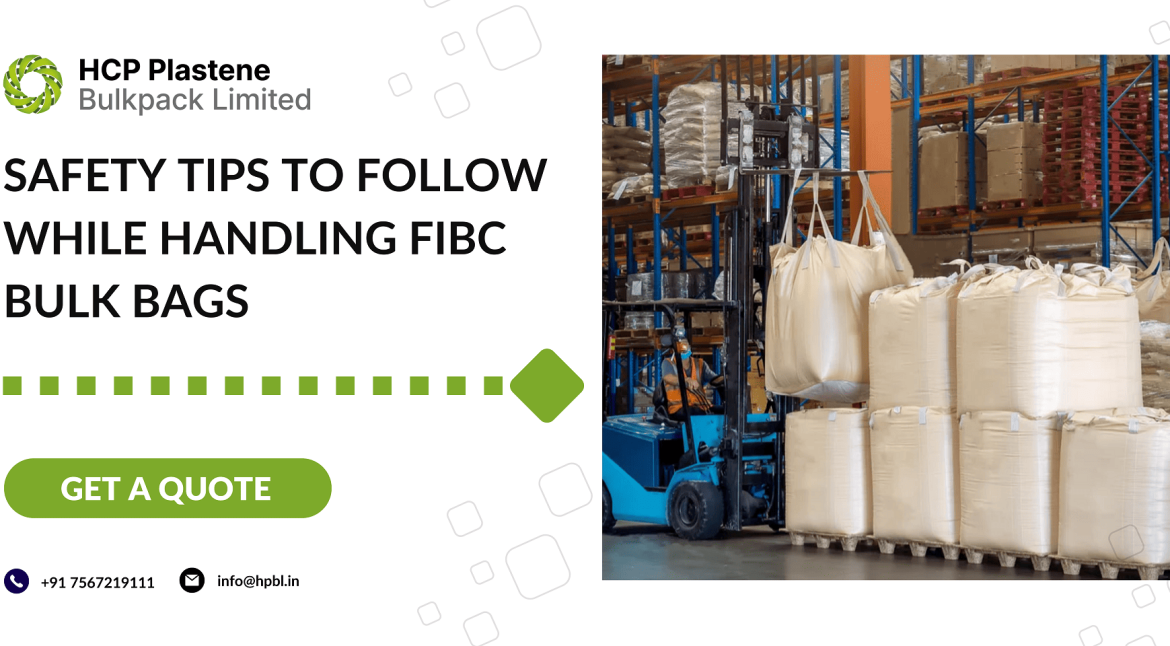FIBCs bulk bags are widely accepted and certified as the most affordable method of packaging, based on a cost-to-weight-transported relation. For storing and transporting dry flowable commodities weighing up to 2200 Kgs, bulk bags are the ideal packing option. Fabric composed of polypropylene is woven to create them. This increase has been greatly influenced by economic issues, such as cheaper packing materials when compared to equivalent small and semi-bulk containers. However, the ergonomic advantages of bulk bags over small bags, small boxes, and drums have also had a significant impact. There are several safety concerns that you need to be aware of while handling FIBC bulk bags which will be discussed in this article.
What are FIBC bulk bags?
FIBCs are sturdy solutions for bulk packaging that are good for the environment and can support heavy loads. Due to their flexible packaging and storage options, these bags are the most often used logistics-based packaging solutions globally. In a global movement towards sustainability, businesses in countries like the US, Japan, Canada, Korea, and many more are passionately seeking out eco-friendly packaging solutions. Join the wave and choose the perfect FIBC bag that aligns with your business, ensuring both the well-being of our planet and the preservation of your products. Let’s embark on this transformative journey together!
Tips to consider while handling FIBC bulk bags
1. All tools used for handling bags must be perfect
A complete FIBC bulk bag must be filled, lifted, and transported using only tools that are in perfect operating condition. For the safety of the employees and the goods, this must be ensured. If the bags are damaged, there might be product leakage and consequent waste. Machines, including forklifts, should be kept in good working order.
2. Forklift must be with enough assistance capability
If a bag is not correctly supported while being filled, it might sag or even collapse over. In the best-case situation, these issues cause minimal or no harm; in the worst-case scenario, operators or their attachments might be crushed. Injuries may also occur when the bag is supported by a temporary structure, most frequently a forklift. Despite the forklift’s potential for sufficient help, the operator must work closely with it. The operator runs the danger of being run over, hit by the forklift, or caught between the forklift and other pieces of equipment.
3. Be cautious while using loops
An essential component of a FIBC bulk bag is a loop. These are strategically placed to make lifting these bags simpler. Never elevate these bags till you’ve used every loop. If the bag is lifted using fewer loops than what is prescribed in the bag, there is a significant chance of bag failure and material leakage.
4. Work with trained and professional people
The people in charge of the crane, lift, or hoist must be properly trained for the job. Make sure that everyone has the training requirements met. Make sure they are always wearing their safety gear to avoid any fatal situations.
5. Read and follow instructions properly
The FIBCA offers thorough handling advice for handling FIBC Jumbo bags securely. Make sure you are completely aware of the basic dos and don’ts stated in these guidelines before handling these bulk bags. Apart from the basic instructions provided by the FIBCA, you can also take some tips from the bulk bag manufacturers from whom you are purchasing the bulk bags.
Make sure there are no others around when you are lifting these bags in addition to the safety precautions indicated above. No one else should be present when lifting FIBC bags to avoid distracting the crane operator. Furthermore, if the bags break, it may put people’s lives in jeopardy.










